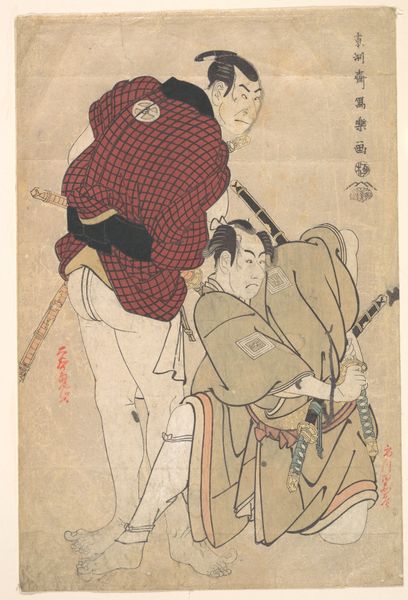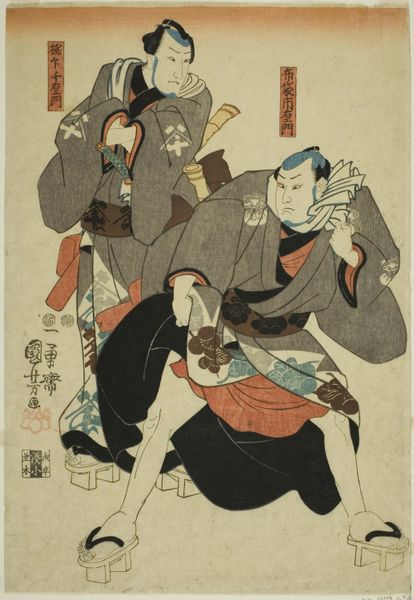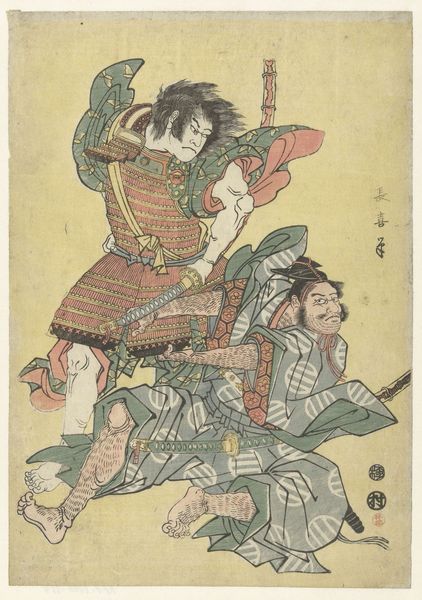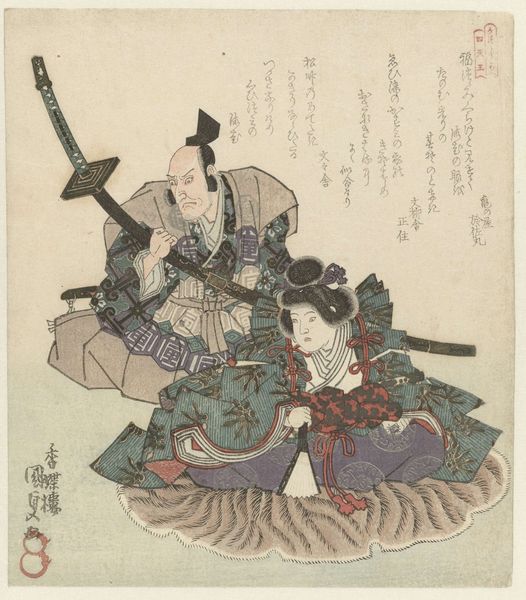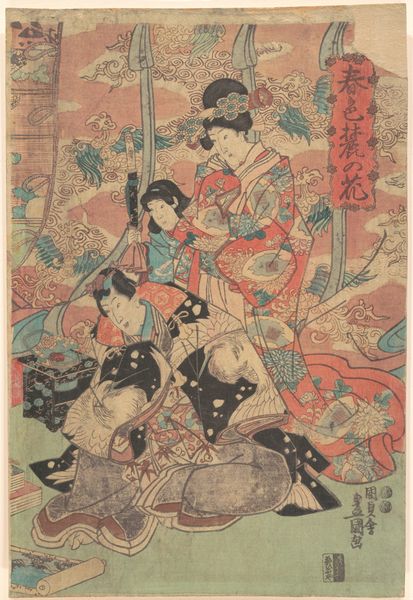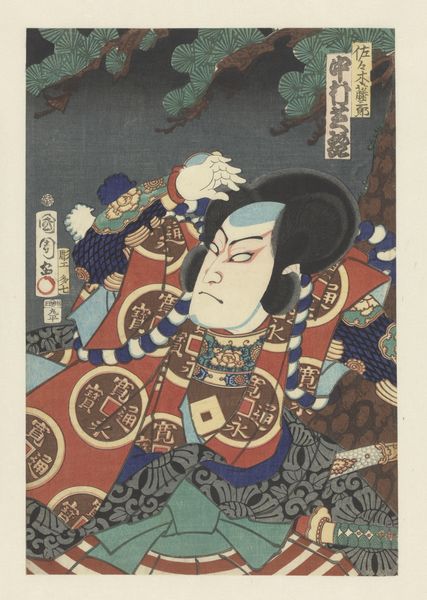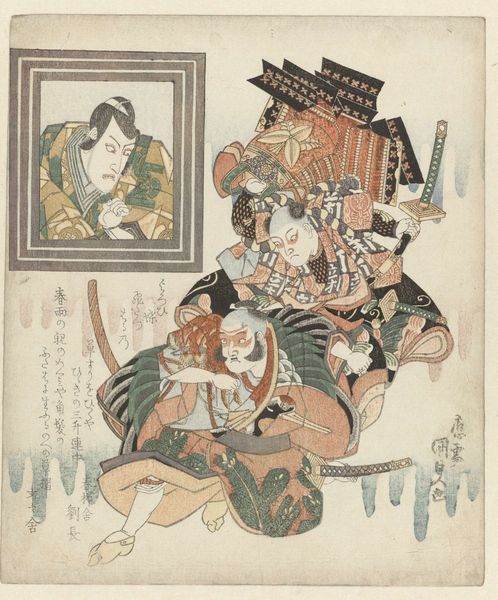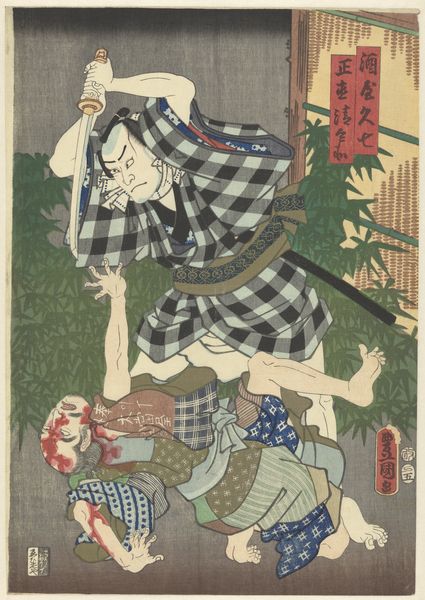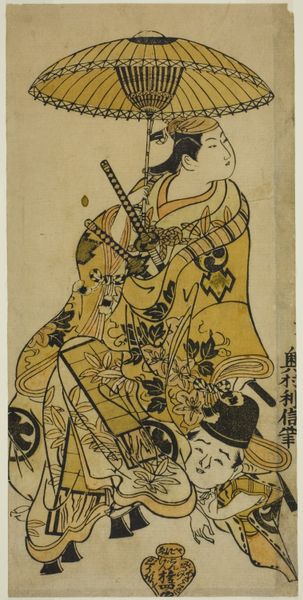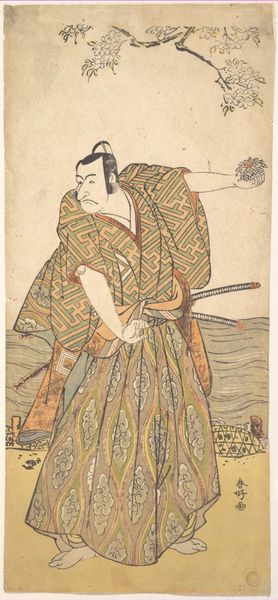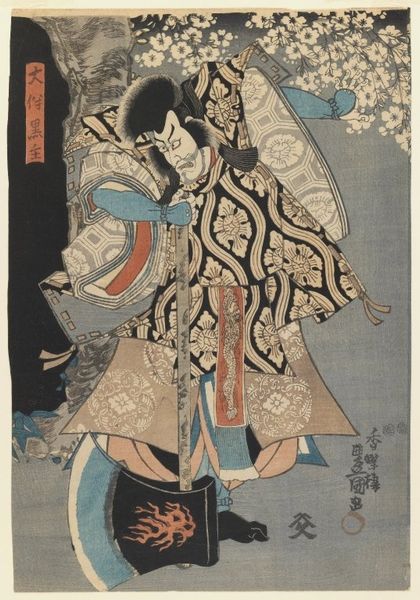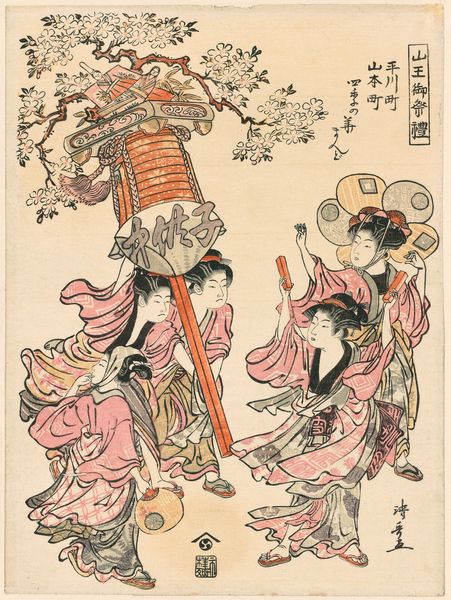
print, woodblock-print
#
portrait
# print
#
asian-art
#
ukiyo-e
#
figuration
#
woodblock-print
#
history-painting
Dimensions: height 360 mm, width 245 mm
Copyright: Rijks Museum: Open Domain
Curator: Looking at Utagawa Kunisada's woodblock print from the mid-19th century, titled "The Warrior Kagekiyo," my immediate reaction is intensity, an impending moment of violence. Editor: It certainly captures a sense of dramatic tension, doesn't it? The bold lines and color choices immediately draw the eye. We see Kagekiyo towering over another figure. What historical context informs this depiction? Curator: Kunisada produced this print within the tradition of ukiyo-e, or "pictures of the floating world," which often portrayed Kabuki actors in famous roles. Kagekiyo was a celebrated tragic hero, a warrior of the defeated Heike clan. The popularity of the story made it pervasive throughout Japanese popular culture. Editor: The image radiates that cultural memory, doesn't it? Look at Kagekiyo’s clenched fist, the sword, his intense gaze downwards – all potent symbols of resistance and controlled rage. The woman beneath him also clutches his robes in fear or is she imploring him? Curator: Her positioning certainly lends a theatrical air. Consider the historical moment of this print. The Tokugawa shogunate rigidly censored content perceived as critical. Perhaps, by depicting a figure from the distant past, Kunisada found a way to comment on contemporary frustrations through a seemingly harmless Kabuki portrait. Editor: A visual strategy of historical allegory. Notice the stylistic details, such as the patterned robes filled with blossoms and crashing waves. How might this interplay between violence and beauty speak to audiences then, and now? Curator: It likely played into established expectations. The ukiyo-e tradition often presented beauty and brutality side-by-side. These arresting visual juxtapositions have historically served to heighten the impact of the artwork, and therefore communicate more profound sentiments. Editor: Ultimately, the power of "The Warrior Kagekiyo" comes from Kunisada's keen sense of cultural symbolism—a dramatic rendering of heroism and its lasting emotional impact. Curator: And Kunisada offers us more than a simple portrait, embedding within it layers of historical reflection and socio-political resonance for audiences both past and present.
Comments
No comments
Be the first to comment and join the conversation on the ultimate creative platform.
